International Women's Day 2021: History, marches and celebrations
- Published
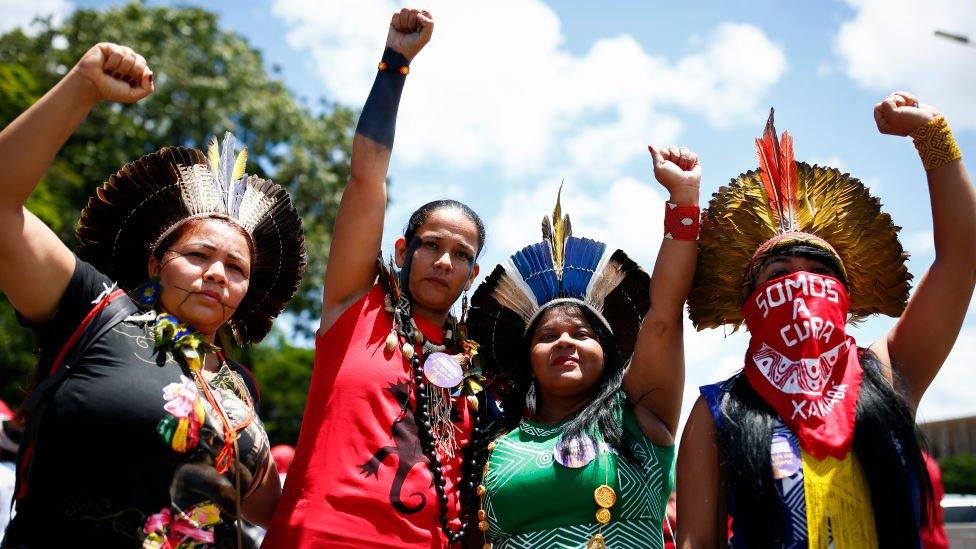
Women called for gender equality during this protest in Brasilia on International Women's Day in 2020
You might have seen International Women's Day mentioned in the media or heard friends talking about it.
But what is it for? When is it? Is it a celebration or a protest? Is there an equivalent International Men's Day? And what virtual events will take place this year?
For more than a century people around the world have been marking 8 March as a special day for women.
Read on to find out why.
1. How did it start?
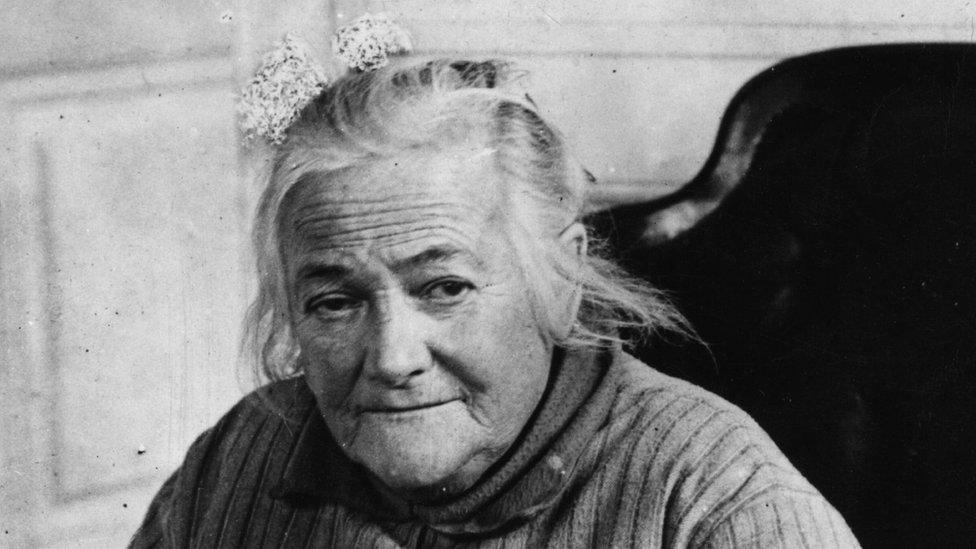
Clara Zetkin founded International Women's Day in 1910
International Women's Day, also known as IWD for short, grew out of the labour movement to become a recognised annual event by the United Nations (UN).
The seeds of it were planted in 1908, when 15,000 women marched through New York City demanding shorter working hours, better pay and the right to vote. It was the Socialist Party of America who declared the first National Woman's Day, a year later.
The idea to make the day international came from a woman called Clara Zetkin. She suggested the idea in 1910 at an International Conference of Working Women in Copenhagen. There were 100 women there, from 17 countries, and they agreed on her suggestion unanimously.
It was first celebrated in 1911, in Austria, Denmark, Germany and Switzerland. The centenary was celebrated in 2011, so this year we're technically celebrating the 110th International Women's Day.
Things were made official in 1975 when the United Nations started celebrating the day. The first theme adopted by the UN (in 1996) was "Celebrating the past, Planning for the Future".
International Women's Day has become a date to celebrate how far women have come in society, in politics and in economics, while the political roots of the day mean strikes and protests are organised to raise awareness of continued inequality.
2. When is IWD?
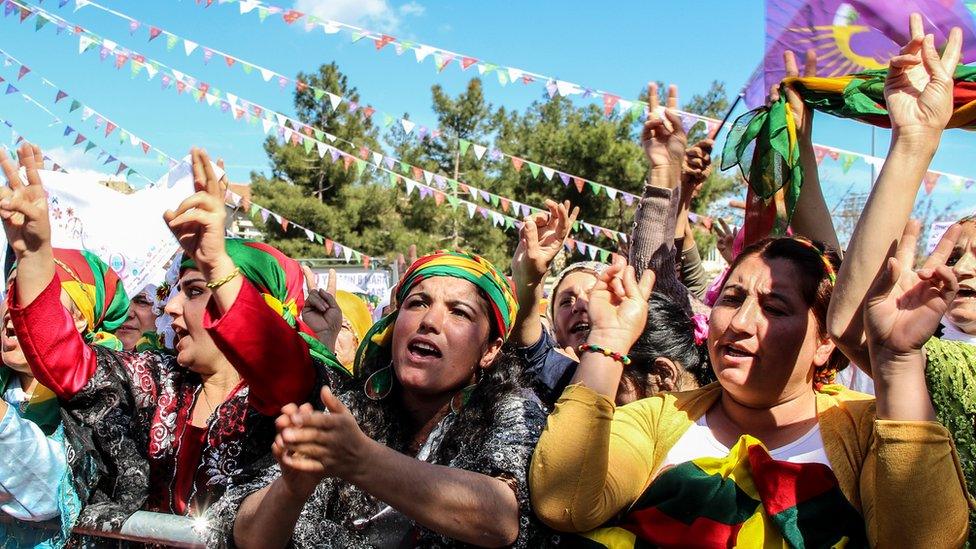
An International Women's Day demonstration in Diyarbakir, Turkey in 2016
It's on 8 March. Clara's idea for an International Women's Day had no fixed date.
It wasn't formalised until a war-time strike in 1917 when Russian women demanded "bread and peace" - and four days into the women's strike the Tsar was forced to abdicate and the provisional government granted women the right to vote.
The date when the women's strike commenced on the Julian calendar, which was then in use in Russia, was Sunday 23 February. This day in the Gregorian calendar was 8 March - and that's when it's celebrated today.
3. What colours symbolise International Women's Day?
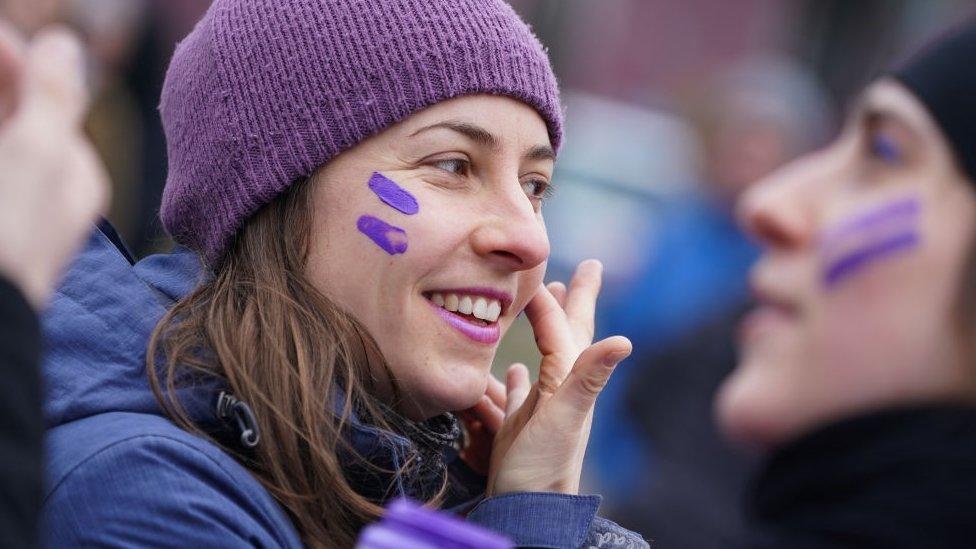
The colour purple is often associated with IWD as it "signifies justice and dignity"
Purple, green and white are the colours of IWD according to the International Women's Day website.
"Purple signifies justice and dignity. Green symbolizes hope. White represents purity, albeit a controversial concept. The colours originated from the Women's Social and Political Union (WSPU) in the UK in 1908," they say.
4. Is there an International Men's Day?
There is indeed, on 19 November.
But it has only been marked since the 1990s and isn't recognised by the UN. People celebrate it in more than 80 countries worldwide, including the UK.
The day celebrates "the positive value men bring to the world, their families and communities", highlighting positive role models and raising awareness of men's well-being.
The theme for 2020 was "Better health for men and boys", external.
5. How is Women's Day celebrated and will there be virtual events this year?
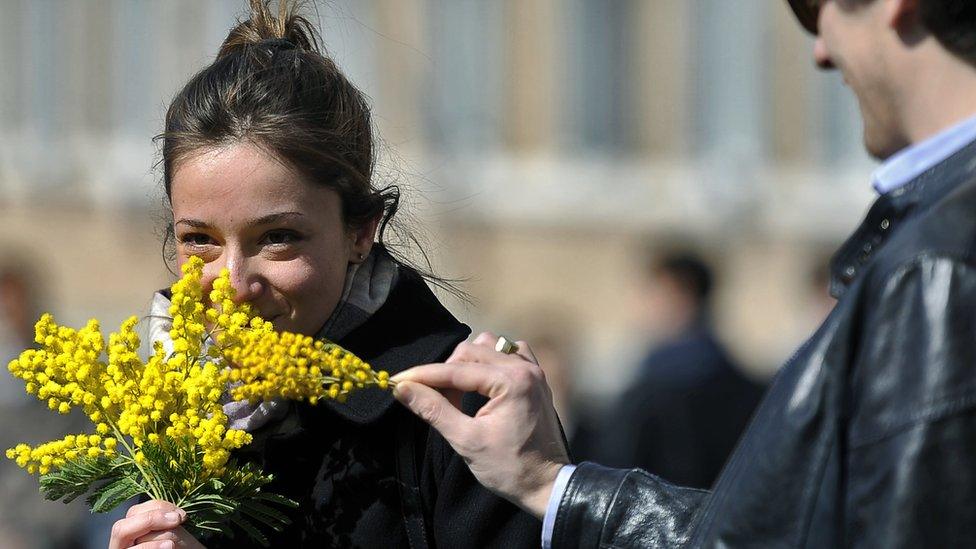
A woman holds a bunch of mimosa in Rome on International Women's day 2012
International Women's Day is a national holiday in many countries, including Russia where the sales of flowers doubles during the three or four days around 8 March.
In China, many women are given a half-day off work on 8 March, as advised by the State Council, although many employers don't always pass the half-day on to their female employees.
In Italy, International Women's Day, or la Festa della Donna, is celebrated by the giving of mimosa blossom. The origin of this tradition is unclear but it is believed to have started in Rome after World War Two.
In the US, the month of March is Women's History Month. A presidential proclamation issued every year honours the achievements of American women.
This year will look a little different because of coronavirus and more virtual events are expected to take place around the world, including this one from the UN, external.
6. What is the IWD 2021 theme?
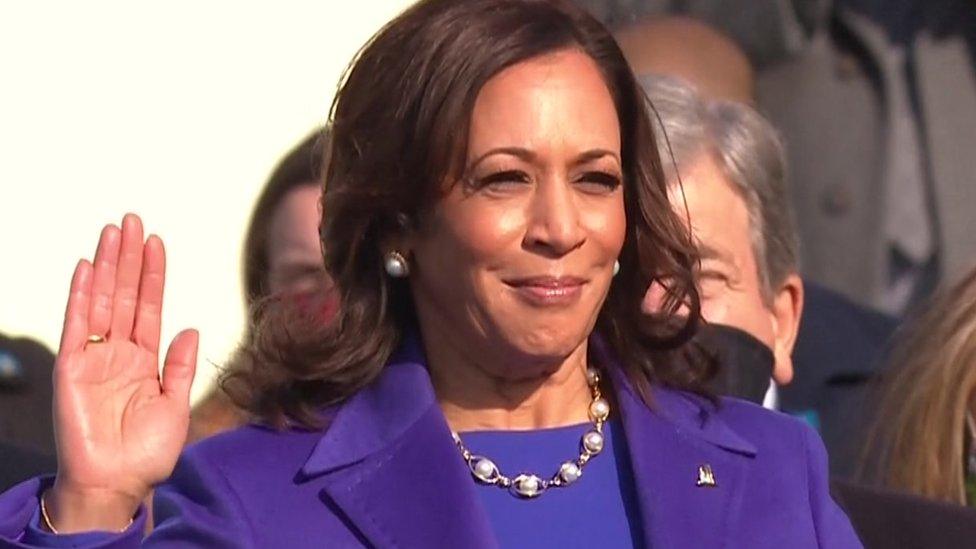
This year saw the inauguration of Kamala Harris as the first female, first black and first Asian-American US vice president
The UN announced their theme for 2021 as "Women in leadership: Achieving an equal future in a Covid-19 world".
UN Women Executive Director Phumzile Mlambo-Ngcuka said: "We need women's representation that reflects all women and girls in all their diversity and abilities, and across all cultural, social, economic and political situations. This is the only way we will get real societal change that incorporates women in decision-making as equals and benefits us all."
But there are also other themes around. The International Women's Day website - which it says it is designed to "provide a platform to help forge positive change for women" - has chosen the theme #ChooseToChallenge and says it is asking people to "raise your hand high to show you're in and that you commit to choose to challenge and call out inequality".
7. Why do we need it?
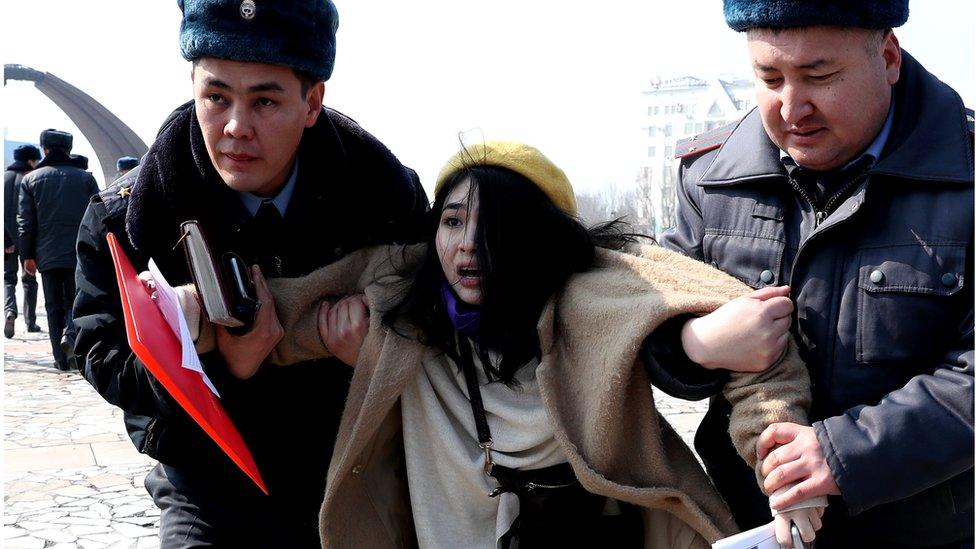
Police in Kyrgyz detained dozens of women's rights activists during a IWD march in 2020, shortly after masked men reportedly attacked marchers
"Gender parity will not be attained for almost a century," according to the IWD campaign, referring to the World Economic Forum, it says "none of us will see gender parity in our lifetimes, and nor likely will many of our children".
It's also recently been a very tough time, with data from UN Women revealing the coronavirus pandemic could wipe out 25 years of increasing gender equality. Women are doing significantly more domestic chores and family care because of the pandemic, which in turn, can impact upon job and education opportunities.
Despite concerns over coronavirus, marches took place around the world for IWD 2020.
While the majority were peaceful, in the Kyrgyz capital of Bishkek, police detained dozens of women's rights activists shortly after masked men reportedly attacked marchers. Activists say women's rights are deteriorating in the country.
Across Pakistan, marches took place in several cities in the face of violent threats and legal petitions.
And in Mexico about 80,000 people took to the streets to highlight the country's rising levels of violence against women. More than 60 people left injured. Although the rally began peacefully, police say some groups threw petrol bombs and officers responded with tear gas.
In the past few years though, we have seen progress and the women's movement reach an unprecedented scale.
This year saw the inauguration of Kamala Harris as the first female, first black and first Asian-American US vice president.
In 2019 Finland elected a new coalition government headed by five women, abortion was decriminalised in Northern Ireland and a law that controlled how women acted and dressed in public in Sudan was repealed.
And who can forget the impact of the #MeToo conversation, which began back in 2017 with a hashtag on social media, speaking out against experiences of harassment and sexual assault? It's now a growing global phenomenon, which continues to highlight unacceptable and inappropriate behaviour and has led to many high profile convictions.
Update 5 March 2021: This article has been updated to include more information about the theme for IWD 2021.


What is 100 Women?
BBC 100 Women names 100 influential and inspirational women around the world every year. We create documentaries, features and interviews about their lives, giving more space for stories that put women at the centre.
Follow BBC 100 Women on Instagram, external and Facebook , externaland join the conversation.